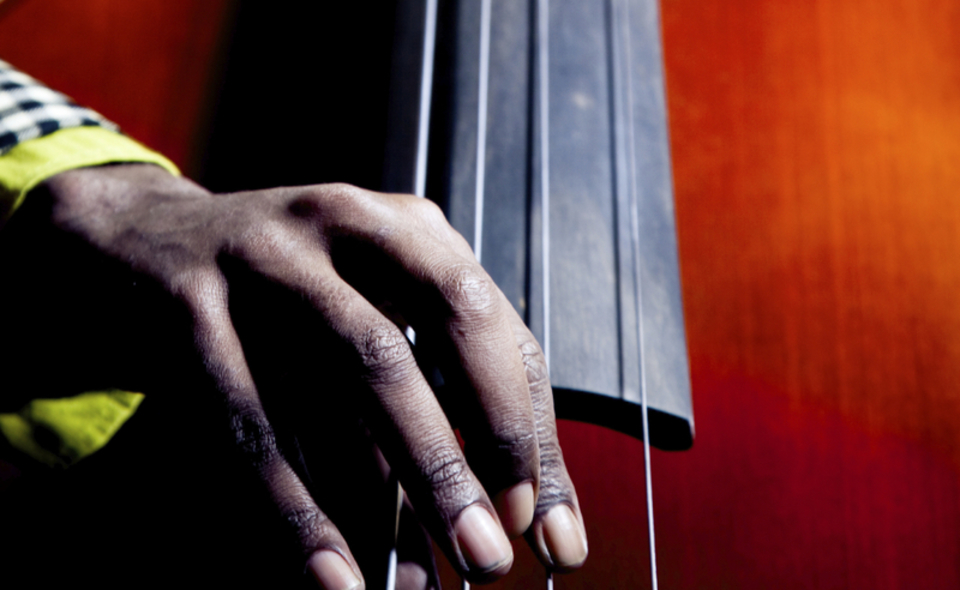About Blues & Boogie
1. Vom Worksong zum Blues
Der Blues hat seine Ursprünge in den Arbeitsliedern (Worksongs) und Spirituals der nordamerikanischen Sklaven. Ethnologen ist es letztlich zu verdanken, dass die Vorläufer für die Nachwelt mit der aufkommenden Tonaufnahme- technik konserviert wurden. Daraus und den Überlieferun- gen der Musiker konnte man die Entwicklung der Musik recht gut nachvollziehen. Die Verwandtschaft des Blues mit den frühen Worksongs und Spitituals ist unüberhörbar. Der Blues hat sich im Laufe der Zeit als ganz eigener Stil vollkommen von seinen Ahnen gelöst und wurde langsam zu dem was wir heute kennen.
Die musikalische Quelle von Worksongs oder Spirituals lag nach allem was wir heute wissen nicht in den meist afrikanischen Herkunfts-ländern der Sklaven. Der Blues ist also ein echter, gewachse- ner Bestandteil der nordameri- kanischen Musikkultur.
Der frühe Blues war weniger nach bestimmten Tonarten oder Taktfolgen genormt. Die Musiker aus dieser Zeit haben ihren ganz persönlichen Stil gehabt; gesanglich über ihr Leben und von ihren Sorgen erzählt. Es kam häufig zu einem echten Dialog zwischen Zuhörern und Musiker. Ein Transportmittel von Emotio- nen für eine damals analpha-betische Zielgruppe.
2. Der Blues erobert den Norden
Wie auch die ersten Platten gut dokumentieren, hatte sich also eine große Vielfalt individueller Stile entwickelt.
Es gab eine ganze Reihe reisender Straßenmusiker, die sich zusätzlich bei kleinen Engagements ihre Cents verdienten. Unter ihnen nicht wenige behinderte Menschen, die hofften sich ihren Lebens-unterhalt erspielen zu können.
Diese Sänger, Gitarristen und Harpspieler kamen mit dem Zug (häufig als blinde Passagiere, sog. "Hobos") aus dem Süden in die nördlichen Staaten der USA. Und es ist sehr wahrscheinlich, dass sich Musiker auf ihren Touren begegneten, sich gegenseitig inspirierten und über Auftrittsmöglichkeiten austauschten. Sie werden Freundschaften geschlos-
sen und Duos, Bands etc. gebildet haben.
Sie mussten um engagiert zu werden neben dem Blues auch andere populäre Songs wie eine Jukebox abrufen können; alles vom Ragtime bis zum Country usw. Also Allrounder, die es jedem Geschmack recht machen konnten. DEN Bluesmusiker gab es also nicht oder noch nicht. Dies ging
erst einher mit der Erfindung der Schallplatte und der Kommerzialisierung des Blues mit Beginn des 20. Jahrhunderts.
3. Der Blues bekommt Struktur
Die typische Formen als 12-, 8- taktige etc. Varianten haben sich wohl erst beim Zusammenspiel mit anderen (Instrumenten) ergeben. Es klingt halt nicht besonders schön wenn der eine sich noch in E befindet, während der andere schon in A spielt :-)
Auch muss ein Blues nicht aus 3 Akkorden bestehen. Von ein- bis vielakkordigen Titeln gab es alles. Die Qualität der Musik hat nichts mit der Anzahl der Akkorde zu tun. Das trifft auf jeden Musikstil zu. Der große Reiz des Blues liegt darin sich in einer ganz individuellen musikalischen Form ausdrüc-ken zu können. Und der Improvisation, die grenzenlose Kreativität ermöglicht.
Der Blues prägte verschiedene Stilrichtungen aus. Die bekanntesten sind Country-Blues, Delta-Blues, Chicago-Blues oder Rhythm n Blues. Auch der New Orleans-Stil bis zum Bayou sind mit Blueselementen versehen.
Rock, Rock n Roll und Elemente von Swing und Jazz sind auf den Blues zurückzuführen und wären ohne ihn nicht entstanden. Dies gilt auch für spätere Abkömmlinge wie Soul, Pop oder Hip Hop.
"The Blues are the roots and the other musics are the fruits" (Willie Dixon).
4. Der Blues findet das Piano
Wie kommt nun diese Musik zum Klavier? Zunächst: Die Gitarre war natürlich für Wandermusiker das ideale Instrument. Das Klavier war teuer, schwer und nicht an jeder Straßenecke verfügbar. Es gab aber vor allem in den Städten Nordamerikas viele Ecken in denen Klaviere standen und die auch der Unterhaltung dienten. In Großstädten sowieso. Und damit wurde der Blues auch für Pianisten interessant. Übrigens standen Klaviere auch in afroamerikanischen Haushalten - dienten allerdings dort zur Begleitung religiöser Lieder. So gab es eine ganze Reihe recht guter afroamerikanischer Pianisten, die meist eine fundierte Ausbildung hatten. "Big Joe Duskin" hatte einmal davon berichtet, wie er mehrfach von seinem Onkel - einem Priester - versohlt worden war, wenn er mal wieder das Hausklavier zu seinen Boogieproben "missbraucht" hatte und sich dabei erwischen ließ. Dieser Stil galt nämlich in den oberen Schichten als unanständig ("Devils Music"). Eine Haltung, die sich später beim Rock n Roll wiederholen sollte.
Nun haben diese Pianisten Gitarrenriffs auf das Piano übertragen woraus sich dann ab ca. 1910 eigenständige Stile bis hin zum artistischen Boogie Woogie als eine Art tanzbarer schneller Blues entwickelten. Es entstanden sog. "Szenen"; man kannte sich. Zum Teil wohnten die Pianisten sogar in einer flat. Dem Siegeszug stand nichts mehr im Wege.

